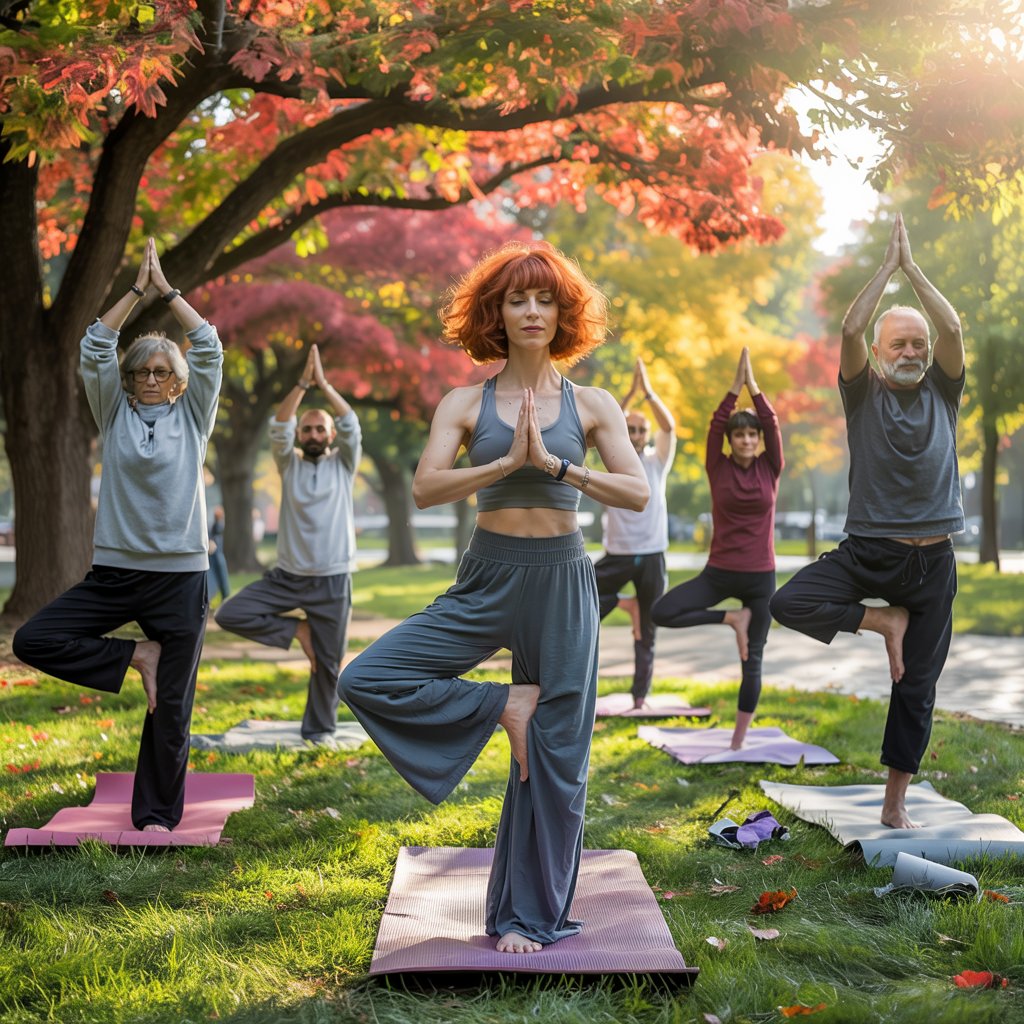
How to Increase Life Expectancy Joyful Vitality Secrets
Insights from Experts on How to Increase Life Expectancy
Personalized fitness plays a crucial role in how to increase life expectancy. By customizing exercise plans to fit individual needs, various health aspects can be effectively addressed. The focus should be on flexibility, strength, and cardiovascular health. Here is where MetersFit’s innovative AI platform provides tailored recommendations that adjust as users advance.
For instance, a 62-year-old woman facing mobility challenges experienced significant improvements by following a personalized fitness plan that emphasized low-impact workouts and strength training. Over six months, her walking endurance increased, and she noticed a significant reduction in joint pain. This shows how personalized fitness contributes to living longer and healthier.
Additionally, the platform dynamically adapts workouts based on performance metrics and user input. This flexibility ensures that as individuals become stronger and fitter, their programs evolve, keeping them motivated and engaged. According to a study published in *The American Journal of Preventive Medicine*, those engaging in regular, structured exercise programs can increase their life expectancy by up to 4.5 years.
These adjustments do not just focus on physical fitness; they improve mental well-being too. By concentrating on specific goals like enhanced cardiovascular health, users can influence their longevity directly. To discover more about health benefits and effective workout types, check out the article on exercise routines for optimal aging. Personalized fitness remains a powerful ally in the quest for a longer, healthier life.
How to Increase Life Expectancy Through Personalized Fitness
Personalized fitness is essential in understanding how to increase life expectancy, as a generic approach falls short. Each person possesses a unique body and lifestyle, making tailored fitness vital for overall well-being. Customizing fitness routines not only boosts physical health but also enhances mental and emotional wellness.
Grasping your body type, age, and fitness level can guide the creation of a fitness plan that attends to your specific needs. For example, a regimen that combines both strength training and aerobic exercises can help rev up metabolism, positively impacting longevity. A study featured in the Journal of Aging Research underlines that consistent strength training plays a vital role in preserving muscle mass and bone density as we age [source].
Furthermore, incorporating flexibility and balance exercises is crucial for maintaining mobility, key elements linked to enhancing life expectancy [source]. Setting achievable goals and routinely reassessing them is important for keeping motivation alive.
Recovery needs attention as well in any fitness regimen. The significance of recovery in customized training cannot be overstated, as it influences both performance and longevity. Sticking to consistent, personalized fitness routines can directly contribute to *how to increase life expectancy*, paving the way for an energetic and joyful life.
Dietary Choices to Boost Life Expectancy
Dietary choices significantly affect overall health and longevity. Research shows that the right nutrition can indeed help explain how to increase life expectancy. Prioritizing whole foods, including colorful fruits and vegetables, whole grains, lean proteins, and healthy fats, can dramatically improve health. The Mediterranean diet, for instance, focuses on plant-based foods and healthy fats, leading to lower heart disease risks and a more extended life.
Adding more plant-based foods to meals can help reduce harmful saturated fats. Legumes, nuts, and seeds provide excellent protein sources that nourish the body without extra cholesterol. Regular consumption of these nutrient-rich foods is associated with lower mortality rates. Replacing red meats with plant proteins or fish can improve heart health due to beneficial omega-3 fatty acids.
Steering clear of ultra-processed foods is vital. These often hide sugars, unhealthy fats, and preservatives that contribute to inflammation and chronic conditions. Instead, focus on home-cooked meals made with fresh ingredients to enhance food enjoyment and make healthier decisions.
Lastly, hydration is essential. Water supports all bodily functions, and proper hydration correlates with better health outcomes. By making these dietary changes, individuals can boost vitality and understand *how to increase life expectancy*. For additional nutrition tips tied to fitness, check out this blog post.
Mental Wellness: A Key to Longevity
Mental wellness is crucial when discussing how to increase life expectancy. Cultivating a positive mindset fosters emotional resilience and improves physical health. Practices like mindfulness meditation and gratitude journaling can markedly reduce stress. A calm mind helps the body respond favorably, lowering the chances of chronic diseases. Research indicates that mindfulness reduces stress while enhancing overall well-being, ultimately affecting longevity.
Physical activity is essential to mental wellness. Regular exercise releases endorphins, often called “feel-good” hormones, which help reduce anxiety and depression. Even small changes in daily movement, like opting for a brisk walk instead of sitting, accumulate over time. When considering how to increase life expectancy, it is essential to recognize the close relationship between mental and physical health.
Another vital factor is social connection. Building and maintaining relationships offers emotional support, decreases feelings of loneliness, and helps keep blood pressure steady. Participating in community events or reaching out to friends can significantly enhance mental wellness. Prioritizing mental health is crucial for anyone seeking a vibrant and long life. For more insights, explore the connection between nutrition and fitness and its effect on overall wellness at this link.
Real-World Steps to Increase Life Expectancy
To effectively explore how to increase life expectancy, integrating essential habits into daily life is key. Research consistently supports a comprehensive approach—combining physical activity, balanced nutrition, and social bonds that nurture longevity. Here are practical steps for your journey.
First, regular exercise is a must. Aim for at least 150 minutes of moderate activity each week, including brisk walking, cycling, or swimming. Routine physical activity strengthens the heart and helps maintain muscle mass, crucial aspects of how to increase life expectancy. High-Intensity Interval Training (HIIT) offers significant benefits in shorter periods.
Next, focus on a balanced diet. A vibrant plate filled with fruits, vegetables, whole grains, and lean proteins is ideal. Foods rich in antioxidants, like berries and nuts, combat inflammation. More about how nutrition supports fitness can be explored in this blog.
Moreover, prioritizing mental wellness plays a vital role in longevity. Regular social interactions, meaningful activities, and hobbies foster a sense of fulfillment. Studies show strong social connections can improve life expectancy, proving essential for a richer, longer life.
Finally, do not overlook regular health check-ups. Monitoring your health aids in the early detection and prevention of potential issues. Incorporate these steps into daily routines consistently to boost well-being and effectively learn how to increase life expectancy.
Final words
Combining personalized fitness, nutrition, and mental health strategies significantly influences longevity. Beyond merely living longer, engage in healthier, more vibrant years. Start your journey of enhancing health and life expectancy by joining MetersFit’s waitlist at https://metersfit.com/waitlist/ to access research-backed insights and tools.





